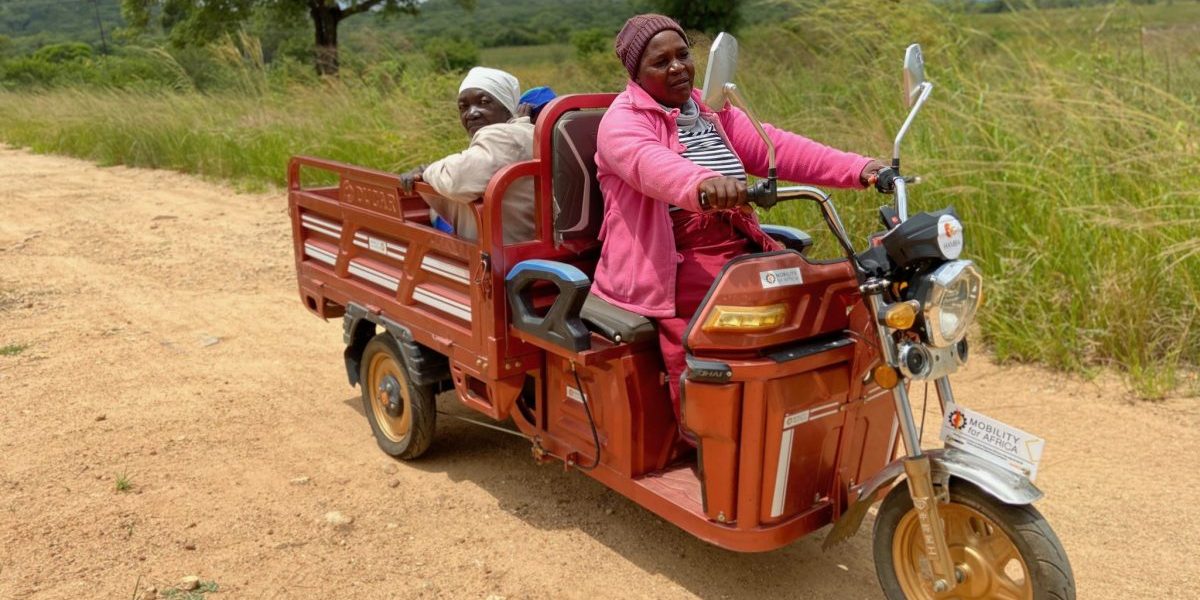Summary:
- The Covid-19 pandemic has wreaked havoc on the automobile industry, but the global electric vehicle (EV) industry is set to perform better than its internal combustion engine (ICE) counterparts. Despite the global and regional economic downturn, the e-mobility revolution is set to change our collective paradigm of mobility and allow millions of Africans relatively affordable access to the fastest-growing EV sector globally: low-speed electric vehicles (LSEVs), or the micromobility segment (two, three, and small four wheelers).
- Although the promise of e-mobility is a realistic and preferable future, many citizens in the region will not gain access to the smarter mobility options EV comprise, unless proactive policies are adopted. Barriers to entry remain basic infrastructure limitations (stable affordable electricity and safe and well-maintained roads. The major global driver of change towards the larger-scale adoption of e-mobility remains government policy like including public procurement programmes; financial incentives that reduce the cost of buying an EV; tightened fuel-economy standards and regulations on the emission of local pollutants; low- and zero-emission vehicle mandates; and, various local measures, such as restrictions on the circulation of vehicles based on their pollutant emission performance.
- Low hanging fruit for regional policy adoption and implementation by SADC MS include the SADC Regional Indicative Strategic Development Plan (RISDP) 2020–30 and the SADC Green Economy Strategy and Action Plan.
- Considering the fact that the region has large portions of the world’s strategic EV minerals and metals, it supposedly provides SADC member states global collective bargaining power, which in turn should enable positive political economy and social-ecological investments and advantages. However, regional e-mobility integration and collaboration is severely hampered by member states’ unwillingness to actualise e-mobility adoption strategies regionally and nationally.
- Another low hanging fruit, for instance, is for the South African Department of Minerals, Resources and Energy to seek membership of the International Energy Agency’s (IEA) Electric Vehicles Initiative (EVI) to support the implementation of the national Green Transport Strategy (GTS).
- Global policy implementation practices on e-mobility adoption are driven by majors of cities/towns, municipalities, and public–private sector models that invest in and operate greener mobility ecosystems. Regional governments does not necessarily have to place the e-mobility transition on hold in the process of waiting on national government policy incentives like custom tax rebates or exemptions on low-emitting vehicles before they can increase access to public transport, especially for the poor and marginalised. In fact, private sector should leverage the regional policy certainty in the SADC secretariat to support and collaborate with the SADC MS on accelerating e-mobility.
- The e-mobility paradigm shift also entails embracing multimodal mobility in its various fluid forms, including micro-shared mobility, which gives marginalised communities in both rural and urban areas last-mile, affordable and environmentally friendly transportation. Decentralised renewable energy smart grids, linked to various forms of micro-shared mobility could be a catalyst towards rural and community-driven job creation initiatives, shifting the reliance on fossil fuels for millions in the region (i.e. off-grid-off-road solutions).
- Micromobility solutions in the region present as shift in narrative from driver-less cars to car-less drivers, because it facilitates integration of people with transit systems, thereby reducing reliance on private cars while making optimal use of existing space by ‘right-sizing’ the vehicle. It has the added benefits of reducing chances of virus infection, GHG emissions, noise pollution and travel costs, and increasing levels of travel enjoyment.







